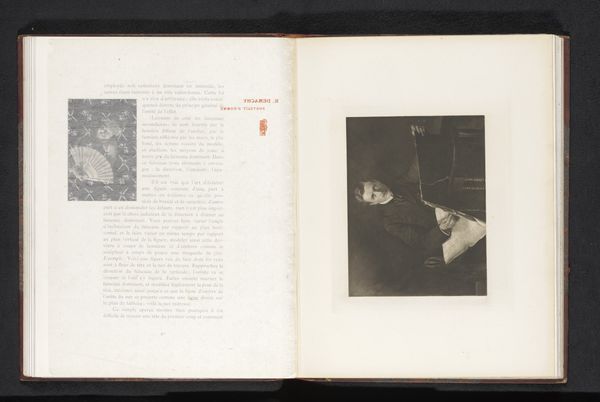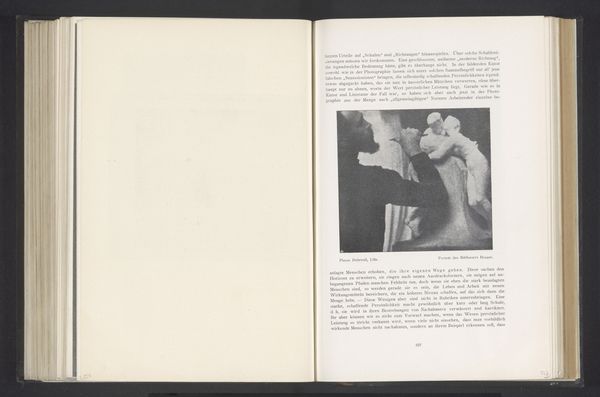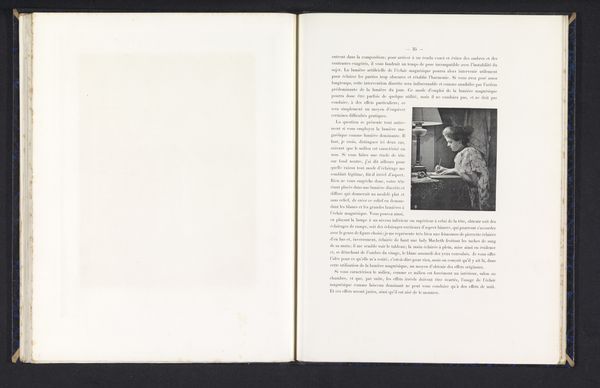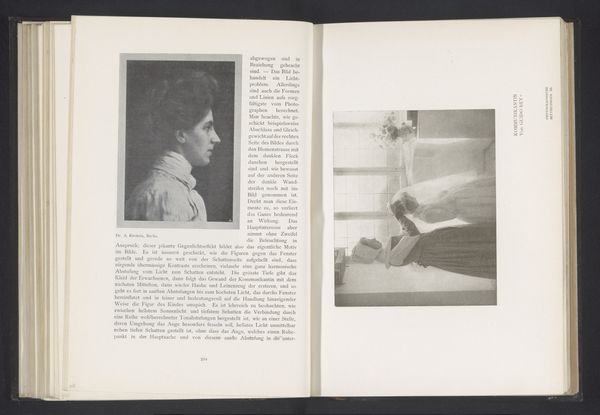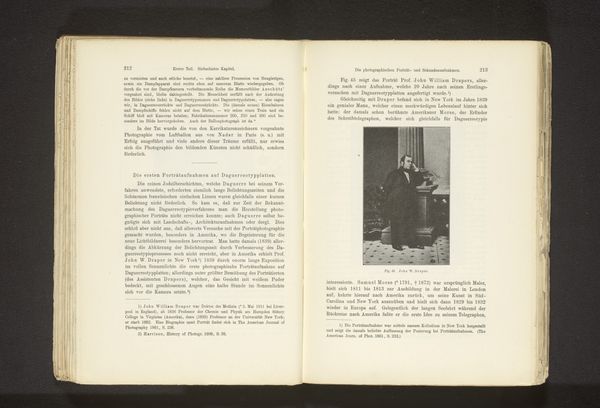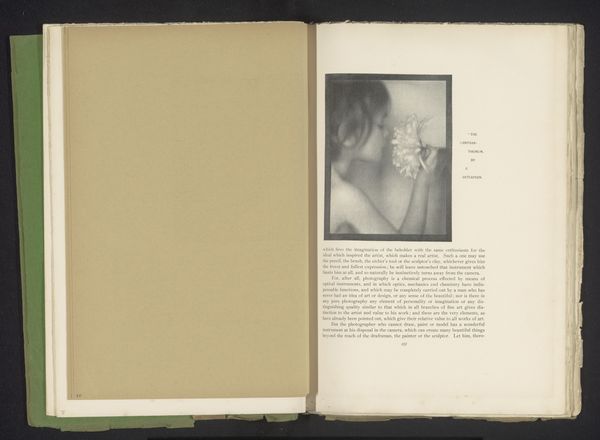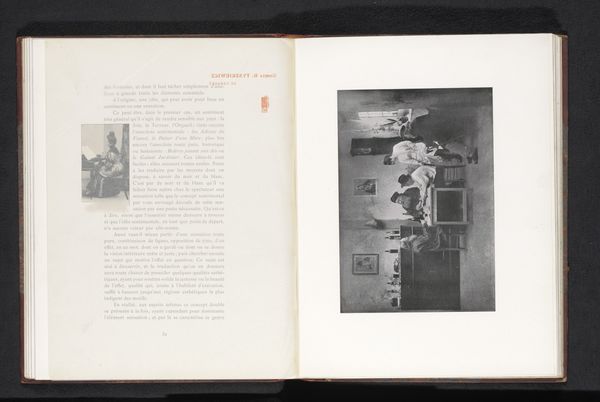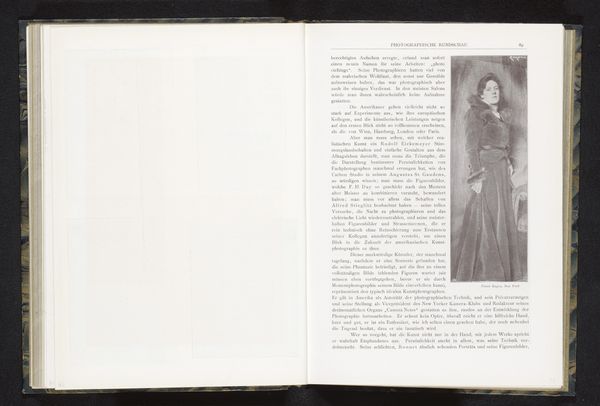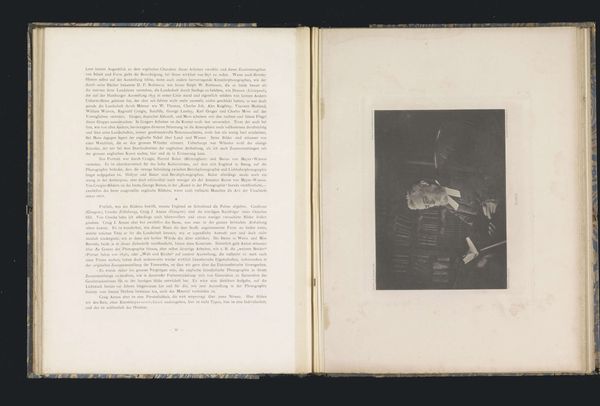
Dimensions: height 160 mm, width 101 mm
Copyright: Rijks Museum: Open Domain
Editor: So, here we have Clarence Hudson White's "Portret van een onbekende vrouw," a photograph from before 1900. It appears to be an impressionistic print. What strikes me immediately is how soft and ethereal the light is, giving it this sort of dreamy quality. What stands out to you from a formal perspective? Curator: Formally, I see a fascinating interplay of light and shadow. Notice how the light doesn’t just illuminate; it actively shapes the subject, blurring the contours of the figure, particularly around the face and the edges of her clothing. This creates a soft, almost indistinct form, de-emphasizing realistic representation. What do you observe about the tonal range within the composition? Editor: I guess that there are varying levels of shading, yes. How would you read those? Curator: Precisely. We move from deeper, solid shadows on the clothing to almost complete bleaching where the light reflects directly on the wall behind the figure. By compressing a broad grayscale into relatively simple gradations, the artist shifts the viewer’s perception, turning an otherwise unremarkable study of the figure into a complex study of gradated tones, tonality as structural language in its own right. This in turn has a direct, profound, and immediate effect on mood. Editor: I see what you mean about how the simplified gradients affect the feel of the image. It becomes less about likeness and more about capturing an elusive, ephemeral quality. Curator: Exactly! Understanding the artistic choices in lighting and tonal composition opens the artwork up to an entire register of feelings and sensibilities! Editor: It is incredible how much detail one can infer through these gradations!
Comments
No comments
Be the first to comment and join the conversation on the ultimate creative platform.

